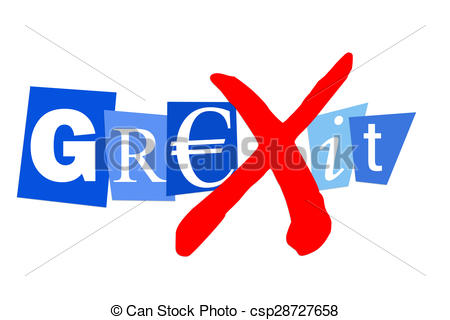

In a double zigzag, as a guideline, wave b of wave Ⓨ should not break the trendline that connects the beginning of wave Ⓦ with the end of wave Ⓧ. A running flat indicates that the forces in the direction of the larger trend at next higher degree are powerful. At least four waves among waves Ⓐ, Ⓑ, Ⓒ, Ⓓ and Ⓔ are subdivided into a single zigzag. In a zigzag, if wave Ⓐ is a leading diagonal, then we would not expect to see an ending diagonal for wave Ⓒ.
What is corrective vs impulsive?
Impulse waves consist of five smaller-degree waves net moving in the same direction as a larger trend, while corrective waves are composed of three smaller-degree waves moving in the opposite direction.
Before buying or selling any investments, securities, or precious metals, it is recommended that you conduct your own due diligence. Moneymunch does not share in your profits and will not take responsibility corrective patterns are also called as : for any losses you may incur. In running flat, wave B crosses the beginning of wave A but wave C could not cross the termination level of wave A and ends within the boundary of wave A.
Zigzag patterns are sharp declines in a bull rally or advances in a bear rally that substantially correct the price level of the previous Impulse patterns. The Zig-Zag is a corrective wave that is made up of 3 waves labelled as A, B and C that move strongly up or down. He is a passionate student of the market since 2017, pursuing a full-time trading career. He has a keen interest and understanding of the Elliott Wave Theory.
An oscillator is an indicator that fluctuates above and below a center-line or between set levels as its value changes over time. Oscillators are used to discover short-term overbought or oversold conditions. A technician will use oscillators when the charts are not showing a definite trend in either direction. Oscillators are most beneficial when a company’s stock is either in a horizontal or sideways trading pattern or has not been able to establish a definite trend in a choppy market. When the stock is in either an overbought or oversold situation, the true value of the oscillator is exposed. A chartist can use oscillators to see when the stock is running out of steam on the upside—the point at which the stock moves into an overbought situation.
Dominant Trend – Here, waves can be in either direction, up or down. When five waves directions is up then advancing waves are known as impulsive waves and declining waves are known as corrective waves and vice versa. One can sometimes see a triangle as the Wave B of a three-wave correction. One must study the pattern very carefully prior to taking action.
Three drives pattern belongs to the group of harmonic patterns but is relatively rare. A three drives patterns strictly adhere to the Fibonacci ratio, and it is essential to confirm the formation. It offers robust trading opportunities and with the proper risk-reward setting when compared with other technical trading tools.
Patterns
In their most simple and straightforward type, impulses comprise 5 lower diploma waves and corrections contain three decrease degree waves. The Elliott Wave Principle states that the market moves in a 5-3 wave sample. Whether bullish or bearish, the repetitive patterns described by this principle all comprise eight waves. Ralph Nelson Elliott, the man behind the Elliott Wave Theory, discovered that crowd behaviour trends in recognisable patterns.
In his research, Elliot found similar recurring patterns regardless of the financial market and time frame. This research would eventually lead him to develop the Elliott Wave Principle. At the core of this principle, Elliott noted thirteen distinct market patterns or waves that periodically repeat in both shape and form.
What is a corrective pattern?
The corrective pattern consists of 3 waves with some exceptions that it moves against the trends of the next larger degree. Wave 2 moves in the direction of the trend, and Wave 1 moves against it. The waves are labelled as A, B and C.
In the expanding variety, wave ③ may be equal to 1.618 the length of wave ①, and wave ⑤ may be equal to 1.618 the length of wave ③. A leading diagonal in the wave one position is typically followed by a zigzag retracement of 78.6% (ϕ√). Within an impulse, if wave ① is a diagonal, wave ③ is likely to be extended.
An ending diagonal always appears as wave ⑤ of an impulse or wave Ⓒ of a zigzag or flat. When wave ③ is extended, waves ① and ⑤ tend to have gains related by equality or the Fibonacci ratio. Wave ④ is usually a sideways correction in the form of a flat, triangle, or combination. Comparison between Running triangle-Leading and Ending Diagonals Chart 1 depicts a theoretical structure of Running triangle and an ending diagonal in a down trend.
Using technical analysis along with fundamental analysis
A triangle can be wave ④ impuls, wave Ⓑ of a zigzag, wave Ⓧ of a double or second wave of an Ⓧ of a triple zigzag, sub-wave Ⓒ, Ⓓ or Ⓔ of a triangle and the last structure of a combination. The center of wave ③ almost always has the steepest slope of any equal period within the parent impulse except that sometimes an early portion of wave ① (the “kickoff”) will be steeper. Today, we will discuss the basic market movement structure, elliotically . A recent comment on one of my ideas published pointed towards the need for a basic understanding of Elliot Waves for the general trading public. The market moves in consistent impulsive and corrective structures .
- Wave ④ always subdivides into a zigzag, flat, triangle or combination.
- The reactionary waves, labeled X, can take the shape of any corrective pattern but are most commonly zigzags.
- Thus Elliott was able to analyze markets in greater depth, identifying the specific characteristics of wave patterns and making detailed market predictions based on the patterns he had identified.
- A “double three” combination comprise two corrective patterns separated by one corrective patternin the opposite direction, labeled Ⓧ.
- The primary difference between the Elliot Wave theory and harmonic patterns is that the latter attaches to the Fibonacci ratio.
Actually they understand 1 to 5 labels but they dont get the quiet idea in one look in which… Trend Line Break Trend Line Break is a reversal chart patterns, where a stock in an up trend, breaks out of a support trend line and a st… Even though MACD does not have an upper or lower limit on its range of values, its movements appear confined. OBV, on the other hand, began an uptrend in March 2003 and advanced steadily for the next year. OBV’s movements are not confined, allowing long-term trends to develop.
Single Zigzag
Nevertheless, when the rules are noted and the key origin wave (WO-W 1) is found, then Elliott trading could be carefully applied. The example above illustrates an Elliott Wave from S&P 500 futures chart. Most Elliotticians trade W3 and W5 as their identification becomes easier to follow and establish fixed rules. There are many other Elliott Wave trading rules that can be found in other trading books and websites. Under Elliott Wave theory, probably the most basic pattern of market progress is the motive wave, which is subdivided into five waves and often labeled by technicians with numbers. Three of these waves move within the course of the underlying development, or impulse, whereas the two intervening waves act as countertrend interruptions, or retracements, of the motive wave.

How to use moving average – If the moving average line is rising from bottom left to top right, it means the upward trend. If the price crosses up through the rising moving average line, this means the acceleration of paces of rising. If the price crosses down through the moving average line, this means the slowing down of paces of rising. After that, if the moving average line turns to downward-sloping, this means entering the downward trend. When triangles occur in the fourth wave, the market thrusts out of the triangle in the same direction as Wave 3. When triangles occur in Wave Bs, the market thrusts out of the triangle in the same direction as the Wave A.
Candlestick and Chart Patterns (15 Days)
Motive Waves (waves 1,3 and 5; A and C) which tend to be smooth and firm. An expanding triangle has yet to be observed as a component of a combination. Within such a flat wave Ⓑ should end well above the origin of wave Ⓐ and that means wave Ⓒ might reflect a 61.8% or even a 100% relationship to wave Ⓐ. No subwave has yet been observed to subdivide into a triangle.
It describes the natural rhythm of crowd psychology out there, which manifests itself in waves. Prices reverse higher, which many see as a resumption of the now long-gone bull market. By this point, fundamentals are probably no longer improving, but they most likely have not yet turned negative.
In the Elliott wave theory, the five waves in the direction of the trend are also known as the motive waves. In Elliott Wave Theory, the Elliott waves can be categorized into five waves pattern. Studying technical analysis is the first and basic step in trading. Good experience in reading charts and technical analysis will give you the upper hand in price prediction in the stock market.
Elliott Waves Theory Basics
Wave ranges can be determined by Fibonacci numbers for time/price ranges. Some traders plot “wave” channels to determine the “entry” and “target” areas. The Elliott Wave theory is very subjective and requires a very careful understanding of the entire wave theory thesis to be successful. Elliott’s principle entails what he known as ‘waves’ and each wave is a part of a fractal. In Elliott Wave Theory predictions, Elliott identifies each of those smaller wave patterns as completely different degrees – but scientists didn’t accept or recognise fractals till a much later time.
Conversely, an RSI study of 30 or less in a downtrend confirms overselling conditions in the market. The reversal pattern occurs at the end of a strong trend of price rally or decline. Traders measure each drive using Fibonacci retracement or extension tools to measure corrective pullbacks and external impulsive legs within the structure. If one can predict when the current trend is losing steam and preparing for a reversal, one can plan a trade with better visibility. The three drives is a reversal pattern of the family of harmonic patterns that predicts trend reversal with higher accuracy.

Wave ② always subdivides into a zigzag, flat or combination. We start with the price distance of each wave.To be able to able to apply successfully Fibonacci Extension calculation we need to review t… The head and shoulders bottom is sometimes referred to as an inverse head and shoulders. Please read the scheme information and other related documents carefully before investing.
What are corrective wave patterns?
Corrective waves are a set of price movements normally associated with the Elliott Wave Theory. Net movement of corrective waves is against the trend at one larger degree. Corrective waves typically consist of three sub-waves.
